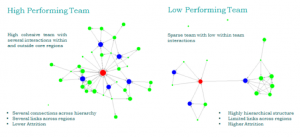 Soumyasanto is an Advisor in People Technologies, Management & Transformation | HR Technologies.
Soumyasanto is an Advisor in People Technologies, Management & Transformation | HR Technologies.
> Evangelist Future of Work, People Analytics
> 30+ Top Global Influences in HR Tech of 2018
Soumyasanto is currently engaging in AI-driven Analytics, Cultural Analytics, Blockchain, Gig Economy and Future of Work for People-Centric businesses & Transformations. Over 13 years of experience in HRMS, Strategies, People Analytics, Products, ERP, UX, Innovation, Leadership, Management advisory with large enterprises around the world.
He has worked in more than 15 large HR IT Transformation projects from design, development, testing, integration and full delivery. Engaged with various companies worldwide in US, Europe, Asia-Pacific and the Middle East for Implementation, Optimization, Rollout, Migration and Support projects.
He is also an Investor, Mentor, and Advisor for potential Startups on HR Technologies.
How important is Performance Management (P.M.) in today’s high-flux organization?
If we try to understand the definition, the Performance management is an ongoing process that provides feedback, accountability, and evidence for performance outcomes to ensure that employees, teams, and departments are meeting strategic organizational goals.
Performance management, when handled skillfully in an organization today, can increase job satisfaction, employee retention, loyalty, and overall performance of the organization. It’s has been seen that employees are happier, engaged, motivated and more dedicated to organizations.
Today, organizations are rethinking fundamental aspects of the performance management process, including the frequency with which reviews are done, methods of manager training, and goal alignment. Recently we have seen an explosion in Performance management with continuous employee feedback, pulse surveys, and people analytics tools like ONA designed to improve the employee experience and organization performance as a whole.
Organization is also focusing today on a high-performance team that can be defined as a diversified group of people with specific roles and complementary talents and skills, aligned with and committed to a common purpose, who consistently show high levels of collaboration and creativity, that produce superior results.
Today organization needs a new paradigm to demonstrate trust, passion, commitment, transparency, flexibility, and cooperation that can reach high standards in terms of performance and for better a sustainable future. Recently I have contributed to a book written by entrepreneur and thought leader Miguel Reynolds Brandao.
Whose responsibility is Performance Management?
Performance management is much more than a simple annual review. So both employee and manager need to be constructive and more responsible. An effective performance management ensures that an employee receives regular, valuable feedback to assist in the pursuit of furthering career goals and supporting the organization.
Leaders have more responsibilities than to their people management accountabilities; leaders are responsible for linking performance management with the organizational planning, systems, and processes.
If we see a High-performance team, they are more pull than push. Leaders in high-performance teams know how to create energy and enthusiasm in the team. Team members should feel inspired, that they are on a purpose and what they are doing is of great importance.
What are the key gaps in current industry practices in managing employees’ performance?
There are practically many gaps in current industry practices when considering performance management. The biggest gap is the right balance between the synchronization of organization goals along with employees and the growth opportunity for the employees through learning and upskilling. On one side organizations try to sync with employees goals with the company’s vision and strategy. On the other hand, it’s also a responsibility for an organization to provide meaningful and positive work environments to their employees. Along with the right reskilling opportunities (much needed in this Digital Era) by relevant learning and motivated engagements.
“Performance management is a complex process that is evolving to focus on relating individual goals to corporate values and priorities.”
Another gap one can see is the trust in leadership, as there is a demand for open and transparent management style today, these need to be reflected throughout the entire organizational structure.
Organizational Culture plays a very important part here, as they have a role in the organization’s goals, performance measures, standards and expectations, policies and procedures, rewards & benefits, decisions, organizational learning, and continuous improvement programs.
Other than better pay or job roles, what are the main reasons why people change jobs?
Glassdoor’s statistical analysis reveals the top three factors that matter most for employee retention.
- Company culture
- Employee salary
- Stagnating for long periods of time in the same job
Organizations, or teams with high levels of employee engagement score high in most if not all of these. Higher engagement levels not only significantly affect employee retention, productivity, and loyalty, but are also a key link to customer satisfaction, company reputation, and overall stakeholder value.
This helps understand engagement drivers not only from an individual employee perspective but also from a team dynamics perspective. After all, our engagement with the organization is actually our engagement with the people in the organization – hence understanding those relationships is critical to better understanding attrition.
The example below illustrates how ONA can be used to understand team dynamics in a pharmaceutical sales organization.
For further reading on this topic, please visit Enhance Engagement and Retention with People Analytics.
What makes a really effective P.M. programme? Any best practices to share.
I believe there is no such Best Practice exists in today as there cannot be a one-size-fits-all concept. So instead of a copy-pasting a practice that proved to be successful in another organization, on one side, an organization should actively listen to what their employees want and care about. As focusing on a better employee experiences can automatically result in a higher performance. On the other, the performance management process should be based on requirements and business goals. So the organizations need to identify the success criteria and map it to business drivers.
But it is very important to gather inspiration from the success stories those are readily available. Like in Performance Management, we have seen some valuable outcomes from Google, Netflix, Adobe, General Electric and Cadbury in the past.
And finally, find our own unique path towards a better future, and leadership with the right mindset plays a very important role here.


3 thoughts on “Soumyasanto Sen, Co-Founder & Partner, People Conscience”